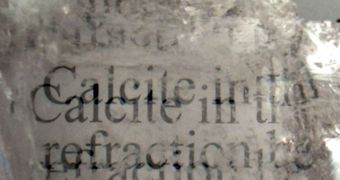An international research team managed to develop an inexpensive, simple system of camouflaging objects as if they were covered with an invisibility cloak. Generally, this cannot be done for macroscopic objects and in visible light, but the collaboration managed to circumvent the limitation.
Taking inspiration from science-fiction and fantasy books and films, experts have been trying to produce invisibility cloaks for many years, but the main obstacle in their path was the unavailability of materials that could bend light seamlessly, without an observer noticing it.
In time, scientists learned to design and built exotic “metamaterials,” custom-made materials that had exactly the chemical and physical properties that were required of them. They could also bend light around an object easily, making it appear as if it wasn't actually there.
The only problem with metamaterials – in addition to being expensive and difficult to manufacture – is that scientists only got them to work in infrared and X-ray wavelengths and at small scales, and never on macroscopic objects and in visible light.
However, achieving the latter objective is absolutely critical for the development of practical applications, and this is precisely what the research group managed to do in its new study.
The investigators, based at the Singapore-Massachusetts Institute of Technology (MIT) Alliance for Research and Technology (SMART) Center, argue that they can now hide an object as large as a peppercorn in visible wavelengths, by using a simple and inexpensive system.
Details of the new discovery appear in the latest online issue of the esteemed scientific journal Physical Review Letters, and are also awaiting publication in an upcoming print issue of the same magazine.
Rather than constructing synthetic layered materials, the team used a crystalline form of calcium carbonate called calcite to produce the invisibility cloak. This is the main component of seashells.
“Very often, the obvious solution is just sitting there,” MIT mechanical-engineering professor and paper coauthor George Barbastathis says. Singapore’s National Research Foundation (NRF) and the US National Institutes of Health (NIH) funded this investigation, he adds.
“Cloaking has been inspired by research on metamaterials, but, ironically, these cloaking devices are almost ‘home-made’,” explains University of St. Andrews chair in theoretical physics Ulf Leonhardt.
“Instead of sophisticated optical metamaterials that are difficult to make and have many problems of their own, they use simple calcite crystals,” adds the expert, who was not a part of the research.
In the experiments the SMART team conducted, a metal wedge was placed on a flat, horizontal mirror, and then a layer of calcite crystals is placed on top of that. The layer is made up of two pieces with opposite crystal orientations, that are glued together.
When visible light is shone on the construct, and the structure is viewed from a particular distance and direction, the metal wedge (or any similar object) disappear completely, as if they were never there.

 14 DAY TRIAL //
14 DAY TRIAL //